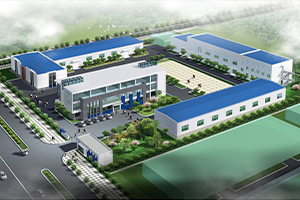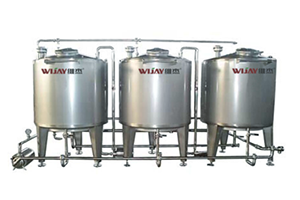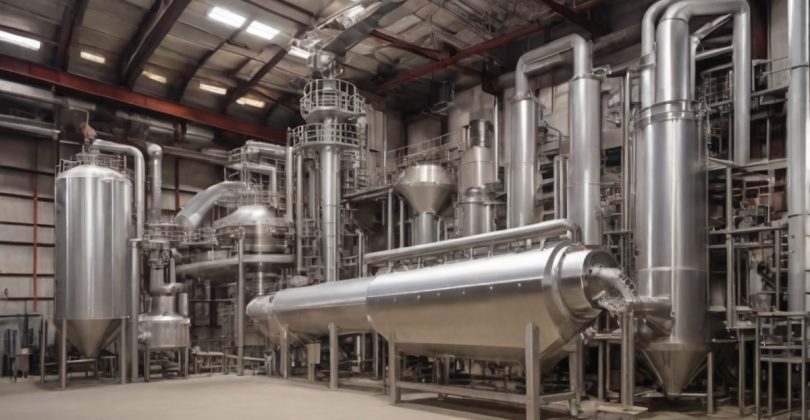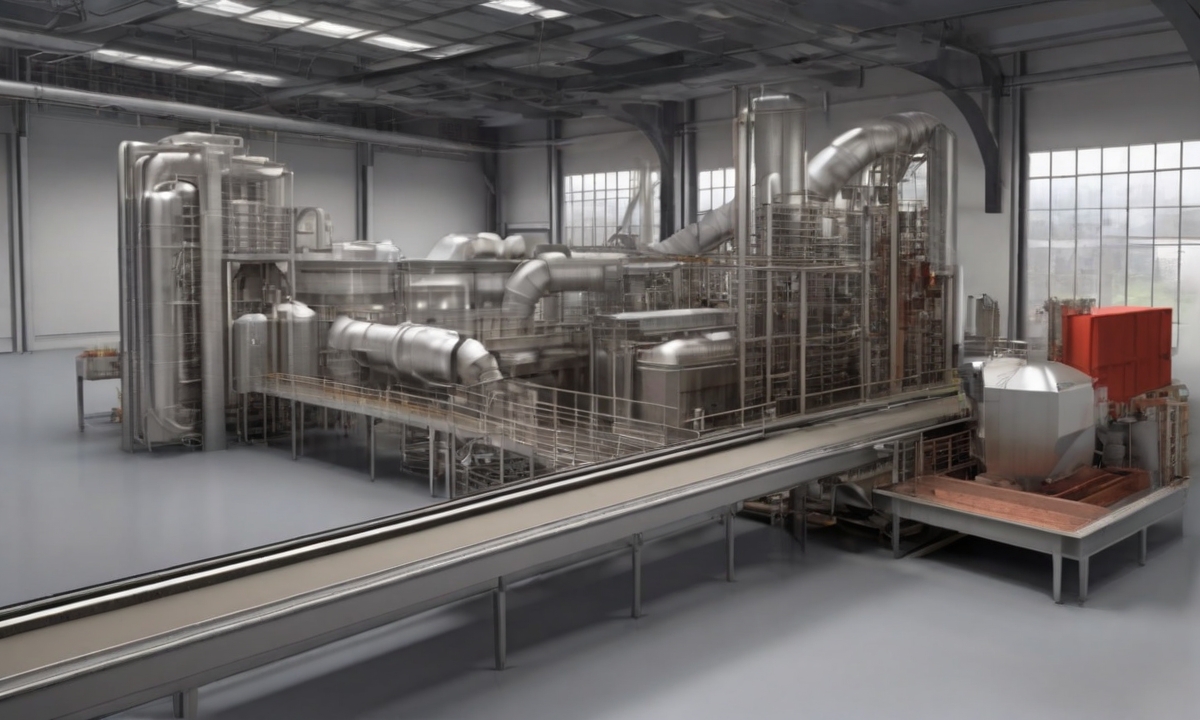Efficient powder conveying systems are a crucial component of various industries, facilitating the seamless transportation of powdered materials within manufacturing processes. These systems play a vital role in ensuring the smooth and efficient operation of production lines, ultimately contributing to increased productivity and cost-effectiveness. In sectors as diverse as food processing, pharmaceuticals, and construction, the flow of bulk material is the bloodstream of production, making powder conveying technology not just a component, but a cornerstone of operational efficiency.
Imagine a world where every pinch of powder or granular substance is strategically shuttled from one processing point to another with precision engineering. That’s where advanced powder conveying systems come into play, reshaping bulk material handling to meet the demands of the 21st-century industry. Embracing these innovative systems is not just about moving materials; it’s about propelling industries forward through enhanced productivity, heightened safety, and minimized waste.
Understanding Powder Conveying Systems in Industrial Applications
The industrial landscape is rich with a variety of applications for powder handling equipment, highlighting its indispensable role in achieving operational efficiency and product consistency. These systems are pivotal in ensuring the precise and hygienic transfer of powders, pivotal in sectors such as food production and pharmaceuticals. To fully leverage the benefits of these sophisticated systems, it’s imperative to comprehend the underlying operational principles, particle behavior during transport, and the critical significance of maintaining system integrity.
Powder transfer systems are engineered with a focus on meeting the nuanced needs of different industries. The core objective centers on facilitating a process of material transfer that is not only smooth but also devoid of any contamination, thereby preserving the quality of the powders. The efficiency of these systems is made evident in their ability to prevent waste and minimize downtime.
In the quest for optimal system performance, the design of powder conveying solutions takes into account a wide range of parameters. From the size and flow properties of particles to their susceptibility to environmental factors like humidity and static, each aspect is carefully considered to ensure a flawless material handling process. The goal is to deliver a Automation Systems that operates within the parameters of cost-efficiency yet does not compromise on delivering materials in an uncompromised state from one point to another within the industrial setting.
- Operational mechanics of conveying systems
- Importance of particle dynamics in transport
- Maintaining system integrity for quality assurance
- Customization to industry-specific requirements
- Achieving contamination-free material transfer
Through a deep understanding of these systems and their application across various industries, companies can significantly boost their production capabilities while adhering to the highest standards of quality and hygiene.
Key Components of a Powder Conveying System
A comprehensive powder conveying system is vital for efficient bulk material handling and plays a crucial role in industrial operations. These systems are comprised of several key components, each integral to the system’s overall performance. The inclusion of feed hoppers, conveyor lines, and sophisticated control systems creates a synergy that enhances both the material flow and the quality of powder transfer.
Feed Hoppers and Their Importance
Feed hoppers are the starting points of a conveying system, acting as the primary receptacles for bulk materials. Their design is essential for ensuring consistent, controlled feeding of powders into the conveying line. Here’s why they’re fundamental:
- Hoppers regulate the initial volume of material, which contributes to a steady material flow throughout the system.
- The size and shape of feed hoppers can affect the efficiency of material intake and prevent bottlenecks.
- They also serve as a preliminary checkpoint where the material can be pre-conditioned before entering the pneumatic conveying system.
Conveyor Lines and Material Flow
Conveyor lines are the arteries of a powder conveying system, facilitating the transit of materials from one point to another. The seamless operation of these lines is pivotal for maintaining the integrity and quality of the powdered material:
- Having the correct type of conveyor, pneumatic or mechanical, ensures that the material is moved delicately and efficiently.
- Smooth material flow is critical to prevent separation or degradation of ingredients, which is especially important in food and pharmaceutical sectors.
- Pipeline design directly influences the system’s efficacy and is tailored to industry-specific requirements.
Control Systems for Regulating Conveyance
Control systems in powder conveying systems are akin to the brain that manages and adjusts the operation of the whole system. An advanced control system can transform material conveyance into a finely tuned, automated process:
- These systems make real-time adjustments to flow rates, pressure, and other crucial parameters.
- Intelligent control systems contribute to the minimization of energy consumption, enhancing the efficiency of the pneumatic conveying system.
- By ensuring precise control over material flow, these systems help in maintaining product consistency and preventing waste.
Types of Powder Conveying Technologies
In the diverse industrial landscape, the choice of powder conveying technology has a profound impact on operational efficiency and product quality. Professionals in this field must decide between various conveying methods, each with distinct features and benefits tailored to different material handling needs.
Pneumatic vs. Mechanical Conveying: A Comparison
Choosing between pneumatic and mechanical conveying systems depends on various factors such as material characteristics, available space, and budget constraints. Pneumatic conveying systems are revered for their flexibility in system design and ease of maintaining a clean environment. They effectively handle various particulates through air pressure or vacuum, encased in pipeline configurations that can navigate around existing structures. In contrast, mechanical conveying solutions, which include screw and belt conveyors, are celebrated for their ruggedness and ability to transport heavy load materials. Their straightforward design translates to reliable performance, particularly in high-throughput industrial applications.
Exploring Dense Phase Conveying Advantages
Dense phase conveying, a specialized segment within pneumatic conveying systems, stands out for its ability to transport materials gently. This method is suitable for handling abrasive, fragile, or pre-mixed materials with minimal wear and tear on both the product and equipment. A notable benefit of dense phase conveying is its low maintenance demand owing to reduced velocities and consequent lower friction within the conveying line. It is an excellent choice for wijay industries that prioritize the integrity of their materials throughout the conveying process.
Innovations in Vacuum Conveying Methods
Vacuum conveying methods have undergone significant advancements to meet the stringent requirements of precision handling, particularly in sectors such as pharmaceuticals and food processing. Innovation in vacuum technology allows for enhanced control over material flow and offers an enclosed conveying environment, reducing the risk of contamination. These systems empower manufacturers to maintain high-quality standards, providing improved protection for workers and the workplace alike against potential exposure to hazardous materials.
Powder Conveying System: Essential for Bulk Material Handling
In the intricate web of industrial processes, the role of efficient bulk material handling systems is undeniably critical. At the heart of these operations is the powder conveying system, a pivotal component designed to streamline production and mitigate logistical challenges. Such systems have transformed the transportation of powdery substances, seamlessly translating from one stage of processing to another with a focus on preserving both the substance’s integrity and the safety of the operational environment.
The conveyance of bulk powders, characterized by their ease of flow yet vulnerability to environmental factors, demands a robust yet gentle approach to transportation. A well-designed powder transfer system is both a guardian against waste through spillage and a deterrent against the perils of dust pollution—a dual role essential for both economic efficiency and workplace health standards.
- Ensures a consistent flow of materials with minimal blockage or downtime
- Reduces the risk of contamination and exposure to environmental pollutants
- Lowers the chances of product degradation, thereby maintaining quality standards
- Minimizes dust generation to foster a safer and cleaner work environment
- Optimizes operational workflow resulting in increased productivity
Deploying these systems across multiple industries has become the benchmark for operations where the reliable, clean, and controlled movement of powders is not just preferred but requisite. In the sphere of bulk material handling, powder conveying systems stand as testimony to human ingenuity’s ability to resolve complex logistical dilemmas with precision-led technology.
Design Considerations for Optimizing Powder Transfer Systems
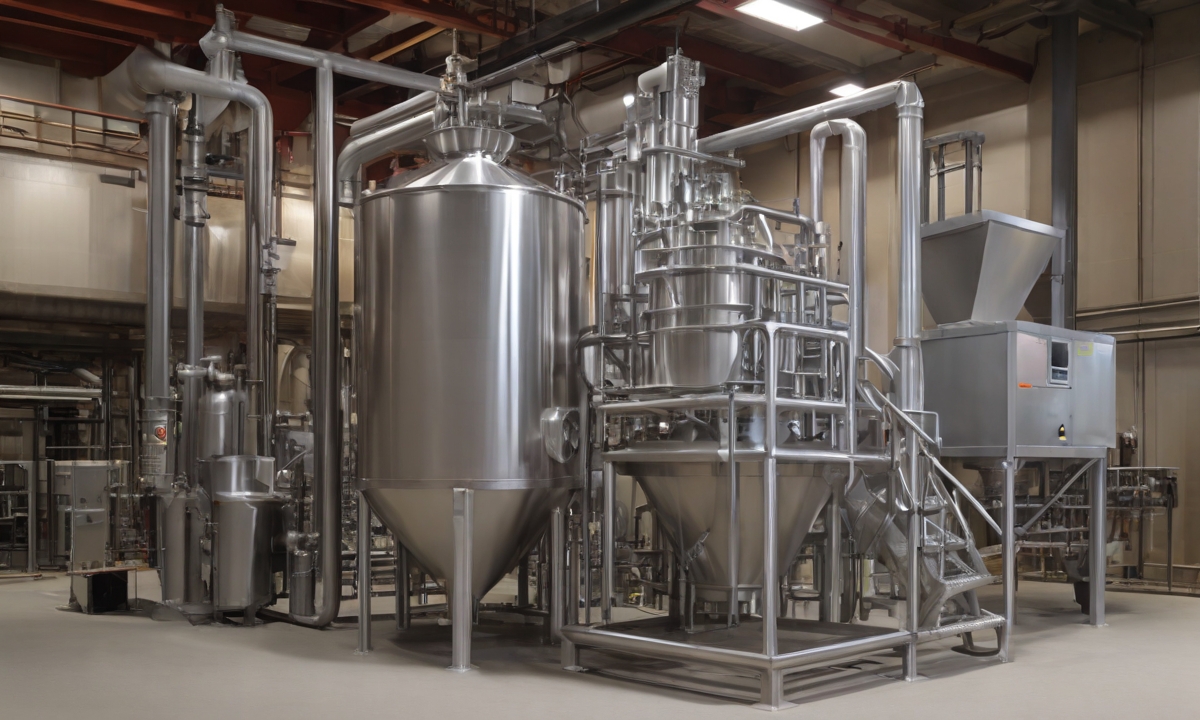
Modern powder conveying solutions must be thoughtfully designed to meet the dynamic needs of the industry. Beyond the immediate requirements, foresight into future scalability, material compatibility, and sustainable practices are increasingly necessary. These considerations define the system’s adaptability, efficiency, and longevity, particularly within sectors where bulk material handling is a core operation.
Capacity Planning and Scalability
The foundation of any efficient bulk material handling system lies in its capacity to handle current loads while remaining flexible for future expansion. When designing a powder transfer system, it’s critical to assess not only present needs but also allow for potential increases in demand. This foresight ensures that systems remain robust and adaptable without the need for complete overhauls, which can be costly and disruptive to production.
Material Compatibility and Wear Resistance
- Selecting the right materials for construction to withstand the physical and chemical properties of the powder being handled.
- Ensuring that components such as seals, valves, and conveyance lines are resistant to wear, reducing downtime for repairs.
- Designing the system to prolong equipment life and maintain the integrity of the powder throughout the transfer process.
Energy Efficiency and Environmental Impact
In today’s market, energy-efficient operations not only result in cost savings but also reflect an organization’s commitment to sustainability. Minimizing power consumption while maintaining high-level performance is a key design consideration. It involves selecting energy-efficient motors, utilizing smart control systems, and embracing technologies that reduce environmental impact, such as low-emission components and dust control systems. The integration of these elements into powder-conveying solutions plays a pivotal role in advancing industrial energy conservation and environmental stewardship.
Customization Options in Powder Handling Equipment
The manufacturing landscape is constantly evolving, requiring highly adaptable powder-handling equipment to meet diverse operational demands. Recognizing the unique challenges of each application, the industry has seen a surge in the availability of customization options within powder conveying technologies. This level of personalization has proven to be instrumental in enhancing process efficiency and accommodating an array of material types and environmental conditions.
- Integration of specialized feeding mechanisms tailors the initial stage of the powder conveying process to the bulk material’s properties, ensuring consistent and controlled delivery to the system.
- Custom pipeline configurations are designed to navigate complex layouts and minimize transfer times, while also reducing the risk of blockages and maintaining product quality.
- Advanced filtration options are available to address industry-specific regulations and ensure that even the finest particles are safely managed during the handling process.
- Equipment adaptability to fluctuating environmental conditions and stringent regulatory requirements underpins the robustness and compliance of the powder handling system across various sectors.
By spearheading the shift towards customization in powder handling equipment, manufacturers are able to deliver solutions that not only align with distinct processing parameters but also underscore the commitment to operational excellence.
Improving Efficiency with Advanced Powder Conveying Solutions
As industries strive for enhanced operational efficiency and productivity, implementing advanced powder conveying solutions becomes increasingly essential. These sophisticated systems are designed to streamline processes, reduce downtime, and elevate the overall effectiveness of material handling strategies. Focusing on innovative technologies such as automation, smart monitoring, and predictive maintenance not only propels powder conveying to new heights of reliability but also aligns perfectly with the principles of lean manufacturing.
Automation in Powder Transfer Processes
Automation has revolutionized the way powder transfer processes are managed. By limiting human intervention, these advanced systems deliver a consistent and error-free operation, enabling a more refined control over material flow. Automation in powder conveying solutions encompasses a suite of capabilities, from automated loading mechanisms to self-regulating discharge rates, which together ensure a harmonious production line that is both efficient and highly precise.
Smart Monitoring and Predictive Maintenance
Equipping powder conveying systems with smart monitoring tools allows for a comprehensive understanding of system performance in real-time. This data-driven approach not only provides invaluable insights into operational trends but also lays the foundation for predictive maintenance. By anticipating maintenance needs, companies are better placed to address potential equipment failures before they escalate, thereby minimizing disruptions and extending the lifespan of their powder conveying solutions.
Lean Manufacturing and Continuous Improvement
Adhering to lean manufacturing principles is essential when refining powder conveying processes. This methodology emphasizes the value of ongoing improvement and waste elimination throughout the manufacturing cycle. By adopting lean practices, businesses can optimize their powder conveying systems to be more fluid, adaptable, and responsive to the ever-changing manufacturing landscape, ensuring a continuous elevation of efficiency standards.
Addressing Challenges Faced in Powder Conveying
Despite the significant advantages and innovations presented by modern powder conveying systems, the bulk material handling sector continues to face substantial hurdles. One prevalent issue is the complex interaction between bulk materials and environmental factors, leading to concerns such as moisture absorption. This not only impacts the flow characteristics but can also compromise product quality. Segregation, another critical issue, threatens the homogeneity of the product, raising substantial operational challenges. Furthermore, clogging — often caused by particles sticking to each other or to the conveyor components — can disrupt the entire production process, leading to downtime and maintenance demands.
These powder conveying challenges necessitate a comprehensive strategy that centers around the application of precise powder-conveying technology and system design enhancement. Equipment subject to wear and tear must be selected to withstand the rigorous demands imposed by aggressive and abrasive materials, thereby extending the lifespan and resilience of powder conveying systems. This component of system design is vital to ensure not only the efficiency but also the safety and sustainability of material handling operations.
Ultimately, the key to navigating these obstacles lies in the strategic integration of cutting-edge powder conveying technology with an in-depth understanding of material behavior. The synergy between innovative technology and scientific insight empowers industries to maintain a clean, efficient, and stable powder-conveying process. By prioritizing the effective management of powder conveying challenges through vigilant selection, design, and technological adoption, industry players can preserve the integrity of their bulk material handling processes, ensuring a continuous and reliable production environment.
FAQ
What are the main benefits of using a powder conveying system in industrial settings?
Powder conveying systems offer numerous benefits including improved efficiency, enhanced industrial performance, and the safe and clean transfer of bulk materials. They reduce the potential for product contamination and wastage while optimizing operational workflows and contributing to workplace safety.
How do powder conveying systems work?
Powder conveying systems use either mechanical or pneumatic methods to transport bulk powders from one location to another. These can include screw or belt conveyors for mechanical systems, and air pressure or vacuum technologies for pneumatic systems, ensuring minimal product degradation and optimizing material flow.
What are the critical components of a powder conveying system?
Key components include feed hoppers, which provide a starting point for material loading, conveyor lines that facilitate movement, and control systems that ensure the efficient and accurate management of the conveyance process through precise regulation of flow rates and pressure levels.
What distinguishes pneumatic conveying from mechanical conveying?
Pneumatic conveying systems rely on air pressure or vacuum to move powders through pipelines, which can be advantageous in terms of flexibility, cleanliness, and the ability to transport materials over longer distances or around obstacles. Mechanical systems, such as screw or belt conveyors, are preferred for their robustness and ability to handle heavier loads.
Why are dense phase conveying systems recommended for certain materials?
Dense-phase conveying systems are ideal for abrasive or fragile materials because they transport powders at lower velocities, reducing wear and material degradation. This gentle handling also translates to lower maintenance requirements and overall cost-efficiency.
What makes a powder conveying system crucial for bulk material handling?
Powder conveying systems are fundamental for efficiently moving large volumes of powder with minimal waste and preventing contamination. They facilitate a continuous and controlled flow of materials which is vital for maintaining product quality and safety during bulk handling processes.
What factors should be considered in the design of a powder transfer system?
Design considerations should include capacity planning and scalability for future expansion, material compatibility to ensure resistance to wear or corrosion, energy efficiency for cost-effective operations, and minimizing environmental impact for sustainable practices.
What customization options are available for powder handling equipment?
Customizations can range from specialized feeding mechanisms and pipeline configurations to integration of smart monitoring systems, all aimed at meeting the specific requirements of different materials, industries, and regulatory conditions to enhance system performance.
How can automation and smart monitoring improve the efficiency of powder conveying solutions?
Automation reduces manual intervention, increases precision, and accelerates processes. Smart monitoring facilitates real-time oversight and data analysis, promoting predictive maintenance to pre-empt breakdowns and streamline continuous improvement in line with lean manufacturing principles.
What are the common challenges faced with powder conveying systems and how can they be addressed?
Challenges include moisture absorption, particle segregation, clogging, and equipment wear. These can be managed through the selection of appropriate conveying technology, system design optimization, and utilizing cutting-edge solutions to maintain consistent, clean, and efficient operations.
